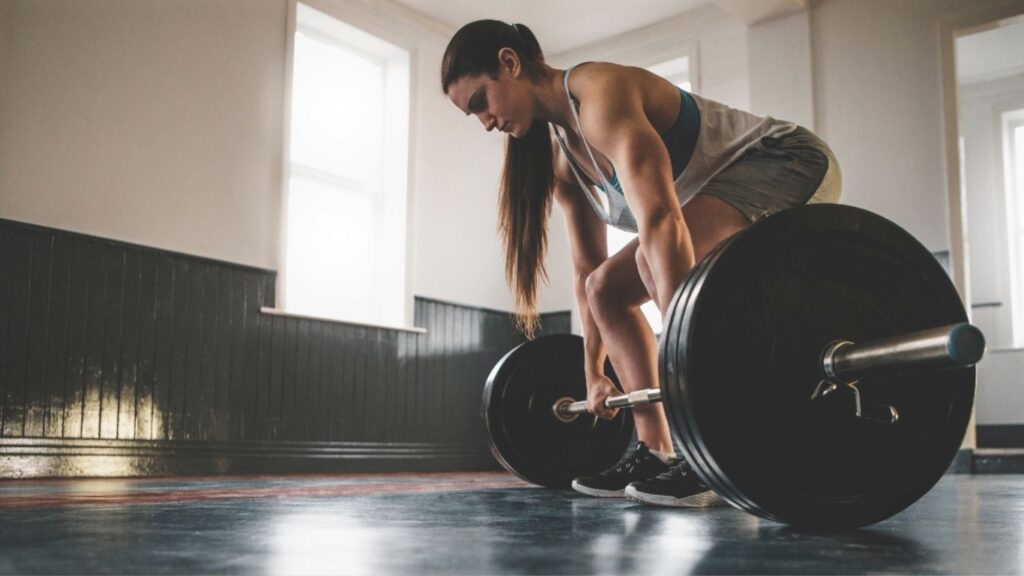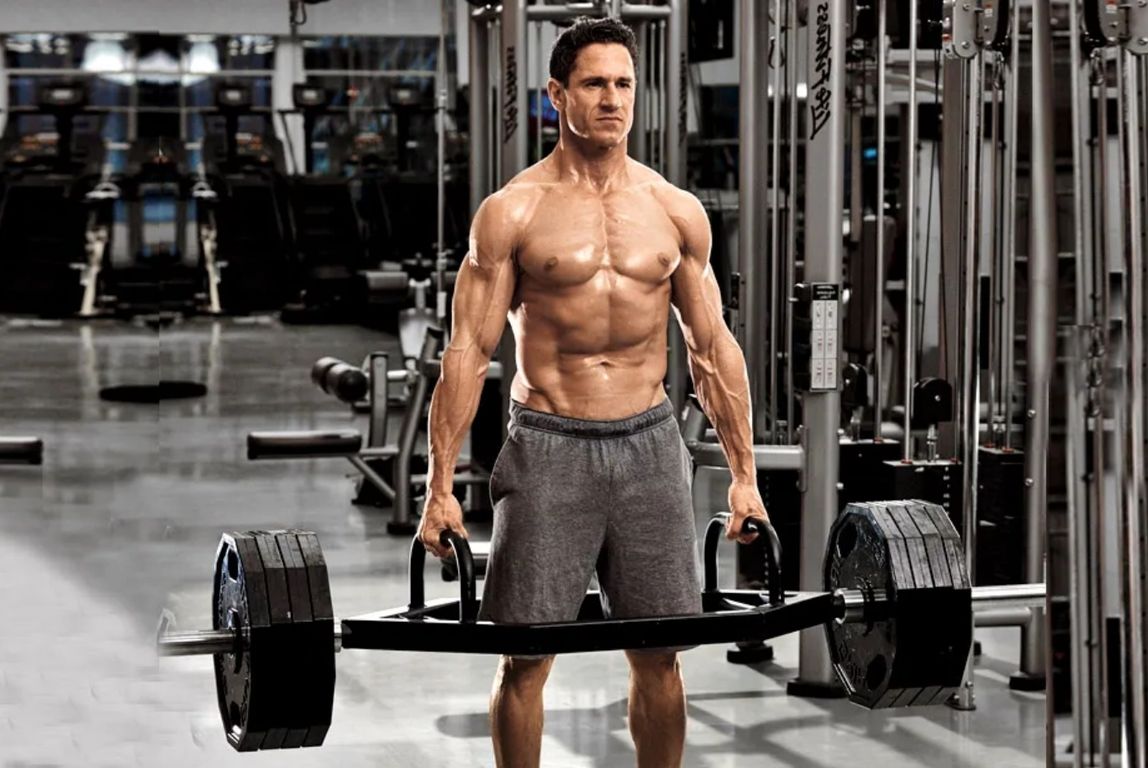Deadlifts are fundamental in strength training, providing extensive benefits for muscle development, strength enhancement, and overall fitness. While the traditional deadlift is highly effective, exploring various deadlift modifications can target specific muscle groups, overcome training plateaus, and add variety to your workouts. Integrating different deadlift types can ensure balanced muscle engagement, promote growth, and enhance workout enjoyment. Here are several deadlift variations to consider incorporating into your fitness regimen, each offering unique advantages to improve your strength and conditioning: sumo deadlift, Romanian deadlift, trap bar deadlift, single-leg deadlift, deficit deadlift, snatch grip deadlift, rack pull, banded deadlift, suitcase deadlift, Jefferson deadlift, and clean deadlift.
Deadlift Variations: How to Spice Up Your Workout
1. Conventional Deadlift
The conventional deadlift is a foundational strength training exercise that involves lifting a barbell from the ground using a hip-hinge movement. It primarily targets the posterior chain, including the glutes, hamstrings, lower back, and spinal erectors, while also engaging the core, traps, and forearms. To perform a conventional deadlift, stand with feet hip-width apart, grip the barbell with hands just outside the knees, and lift by driving through the heels while keeping the back straight and chest up. This exercise builds overall strength, enhances muscle mass, and improves functional fitness.
2. Sumo Deadlift
The sumo deadlift is a popular variation of the conventional deadlift characterized by a wider stance and outwardly pointed toes. This stance shifts the emphasis from the lower back to the quads and adductors, reducing lower back strain and enhancing lift efficiency by shortening the range of motion. The sumo deadlift is particularly beneficial for lifters with longer torsos or limited hip mobility. It is also favored in powerlifting for its potential to lift heavier weights due to the mechanical advantages of the wider stance. Proper form includes keeping the chest up, back straight, and knees tracking over the toes.
3. Romanian Deadlift (RDL)
The Romanian Deadlift (RDL) is a popular exercise variation that emphasizes the eccentric phase of the lift, primarily targeting the hamstrings and glutes. Unlike the conventional deadlift, the RDL starts from a standing position and involves lowering the barbell to mid-shin level by hinging at the hips while maintaining a slight bend in the knees. This movement pattern enhances hamstring flexibility and strengthens the posterior chain without placing excessive stress on the lower back. The RDL is ideal for improving the hip hinge technique and building foundational strength for other compound lifts.
4. Trap Bar Deadlift
The trap bar deadlift, performed with a hexagonal bar, allows for a more upright torso position, reducing strain on the lower back and making it easier to learn. This variation distributes weight more evenly and engages the quads, glutes, and hamstrings effectively. It’s particularly beneficial for those with back issues or beginners. The trap bar deadlift enhances overall strength and muscle balance, making it a safer and versatile alternative to the conventional deadlift. To perform, stand inside the trap bar, grip the handles, engage your core, and lift by driving through your heels.
5. Deficit Deadlift
The deficit deadlift involves standing on a raised platform or weight plate to increase the range of motion. This variation intensifies the engagement of the hamstrings, glutes, and lower back by forcing a deeper bend at the hips. It enhances strength off the floor and improves flexibility and stability in the posterior chain. Ideal for breaking through deadlift plateaus, the deficit deadlift demands strict form to prevent injury. Start with a small deficit and gradually increase as strength and flexibility improve.
6. Banded Deadlift
The banded deadlift involves attaching resistance bands to a barbell, increasing tension as the bar is lifted. This variation intensifies the workout by adding progressive resistance, which enhances strength and power development through the full range of motion. The bands make the lift harder at the top, promoting explosive strength and improving lockout performance. This method also helps improve acceleration and bar speed, making it beneficial for athletes and lifters looking to boost overall power and stability. Banded deadlifts are typically performed with lighter weights to focus on speed and form.
7. Suitcase Deadlift
The suitcase deadlift is a unilateral exercise mimicking the motion of lifting a heavy suitcase. It involves holding a dumbbell or kettlebell on one side, which challenges the core and obliques due to the asymmetrical load. This variation improves grip strength, balance, and lateral stability. Performing the lift requires a neutral spine, upright torso, and controlled movement to prevent leaning to one side. The suitcase deadlift is excellent for enhancing core strength and addressing muscle imbalances, making it a valuable addition to any strength training routine.
8. Jefferson Deadlift
The Jefferson deadlift, sometimes referred to as the Jefferson squat, is an unconventional lift where you straddle the barbell and grip it with one hand in front and the other behind. This unique stance challenges stability and core strength due to the asymmetrical load, providing a full-body workout that targets the legs, back, and core. It’s particularly useful for enhancing grip strength and can help address muscle imbalances. To perform the Jefferson deadlift safely, start with light weights to master the form, ensuring your back remains straight and avoiding excessive spinal rotation.
9. Clean Deadlift
The Clean Deadlift is a variation that mirrors the initial pull phase of the clean in Olympic lifting. It emphasizes explosive power and strength, particularly targeting the legs and back. Unlike the conventional deadlift, it requires a lower hip position and an overhand grip, promoting a coordinated rise of the shoulders and hips. This variation enhances leg power and is particularly beneficial for athletes focusing on Olympic lifts. By simulating the clean’s pull phase, it improves speed, technique, and overall lifting performance. This exercise is ideal for developing explosive strength and refining the mechanics of Olympic weightlifting movements.
10. Rack Pull
The rack pull is a deadlift variation performed with the barbell starting from a raised position, usually set in a power rack. This exercise focuses on the top half of the deadlift, targeting the back muscles, particularly the traps, and enhancing grip strength. It’s excellent for improving lockout strength and developing upper body power. Rack pulls are beneficial for lifters who struggle with the final phase of the deadlift or want to overload their lifts safely. To perform, set the bar at knee height, engage your core, and lift by driving through your heels while keeping your back straight.

Conclusion
Incorporating these deadlift variations into your routine can prevent workout monotony, address muscle imbalances, and target specific muscle groups more effectively. Whether you’re aiming to build strength, enhance muscle size, or improve athletic performance, there’s a deadlift variation to suit your needs. Always ensure proper form and start with lighter weights to master each movement before progressing.
Also read: The Ultimate Guide to Perfecting Your Deadlift Form
